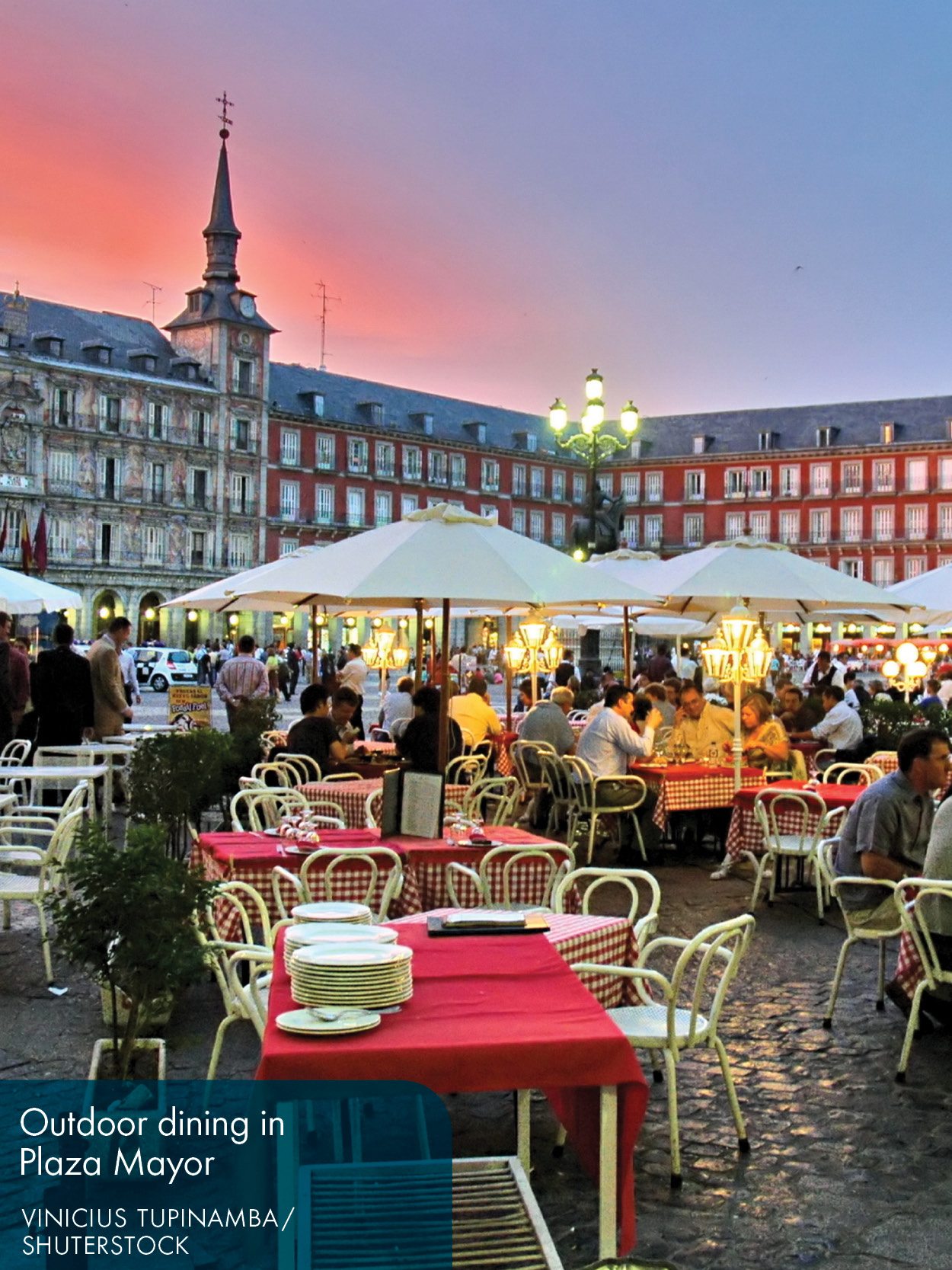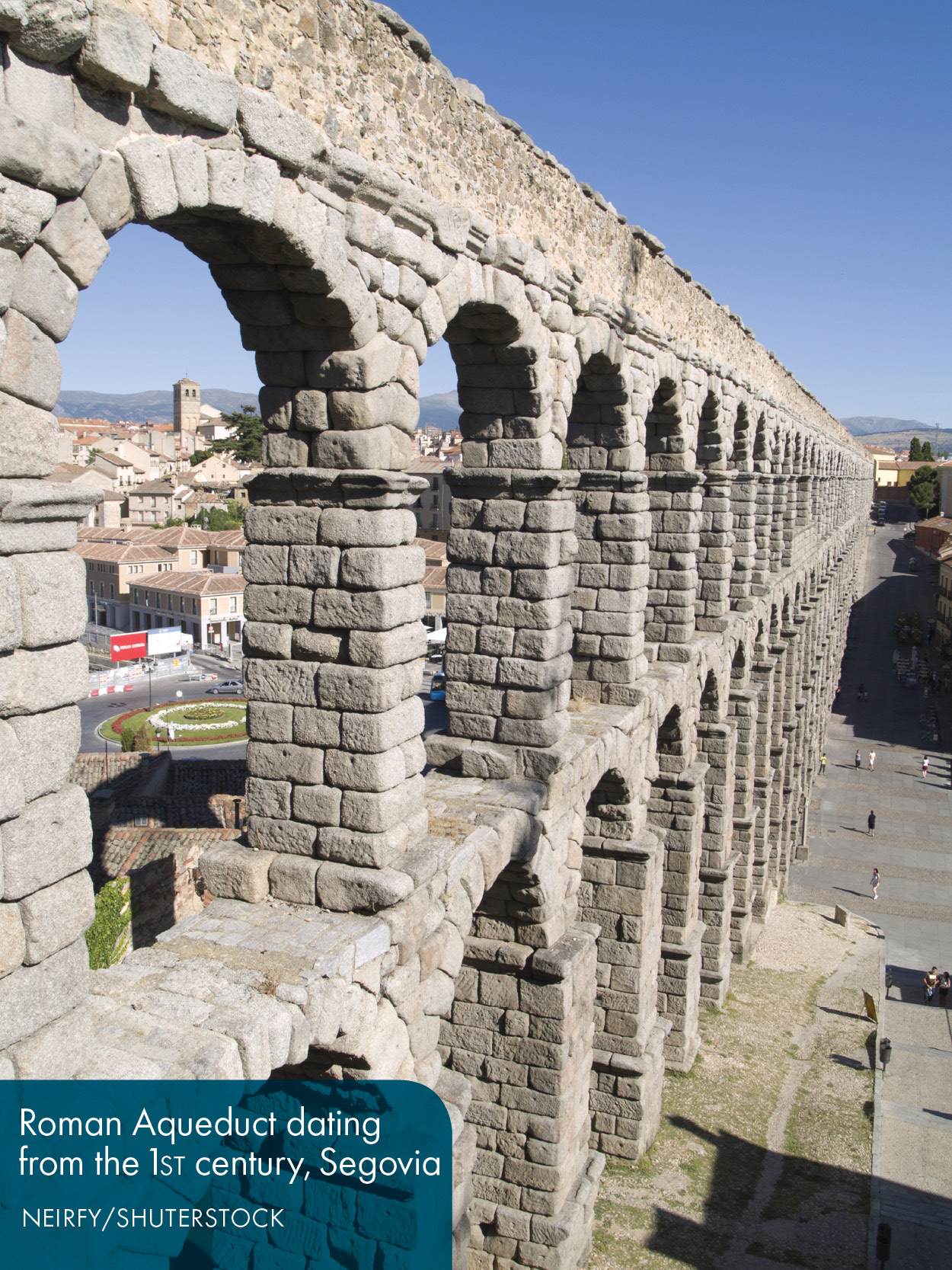Madrid. Its boundless energy makes sights and sounds larger than life. The Prado, Reina Sofa, and Thyssen-Bornemisza museums comprise one of the greatest repositories of Western art in the world. The cafs in the Plaza Mayor and the wine bars in the nearby Cava Baja buzz, and nightlife stretches into the wee hours around Plaza Santa Ana. Sunday's crowded flea market in El Rastro is thick with overpriced oddities.
Toledo and Trips from Madrid. From Madrid there are several important excursions, notably Toledo, as well as Segovia and Salamanca. Other cities in CastileLa Mancha and CastileLenworth checking out if you're traveling include Len, Burgos, Soria, Sigenza, and Cuenca. Extremadura, Spain's remote borderland with Portugal, is often overlooked, but has some intriguing places to discover. Highlights include prosperous Cceres, packed with medieval and Renaissance churches and palaces; Trujillo, lined with mansions of Spain's imperial age; ancient Mrida, Spain's richest trove of Roman remains; and the Jerte Valley, which turns white in late March with the blossoming of its 1 million cherry trees.
When to Go
Summer in Spain is hot, and temperatures frequently hit 100F (38C). Although air-conditioning is the norm in hotels and museums, walking and general exploring can be uncomfortableparticularly in Andalusia. Winters are mild and rainy along the coasts and bitterly cold elsewhere. Snow is infrequent except in the mountains, where you can ski December through March in the Pyrenees and at resorts near Granada, Madrid, and Burgos.
May and October are optimal for visiting Spain as it's generally warm and dry. May has more hours of daylight; October is the harvest season, which is especially colorful in the wine regions.
April has spectacular fiestas, particularly Valencia's Las Fallas and Seville's Semana Santa (Holy Week), which is followed by the Feria de Abril (April Fair), showcasing horses, bulls, and flamenco. April in southern Spain is warm but still cool enough to make sightseeing comfortable.
July and August mean crowds and heat. In August, major cities empty, with Spaniards migrating to the beachexpect huge traffic jams August 1 and 31. Many small shops and some restaurants shut down; most museums remain open.
Getting Here
Most flights into Spain go to Madrid or Barcelona, though certain destinations in Andalusia are popular with carriers traveling from England and other European countries; in recent years, Girona has become a busy hub for the no-frills carriers bringing holiday travelers to nearby Barcelona or the beaches of the Costa Brava. You can also reach Spain via a ferry from the United Kingdom into northern Spain, a ferry or catamaran from Morocco into southern Spain, or on a cruise: Barcelona is Spain's main port-of-call, but others include Mlaga, Cdiz, Gibraltar, Valencia, A Corua, and stops in the Balearic Islands. From France or Portugal you can drive or take a bus.
Getting Around
Once in Spain, you can travel by bus, car, or train. Buses are usually faster than the train, and bus fares tend to be lower, too. Service is extensive, though less frequent on weekends.
For rail travel, the local-route RENFE trains are economical and run on convenient schedules; the AVE, Spain's high-speed train, is wonderfully fastit can go from Madrid to Seville or to Barcelona in under three hours. TIP Rail passes like the Eurailpass must be purchased before you leave for Europe.































